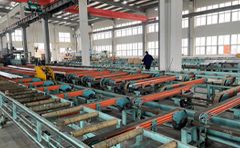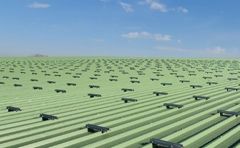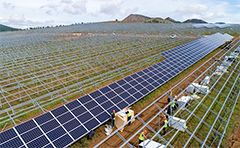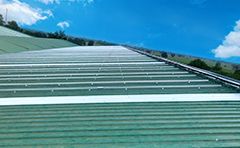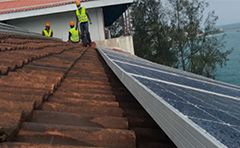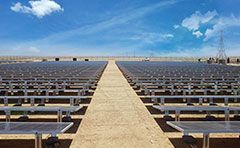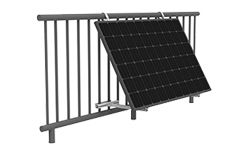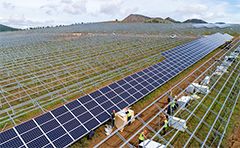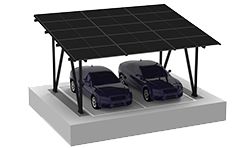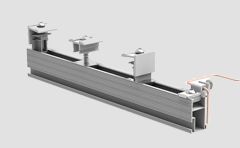Africa is located in the southwest of the Eastern Hemisphere, with the equator passing through it to the north. Most areas have a hot and dry climate, and are known as the "tropical continent".It is precisely because of this that Africa has unique photovoltaic energy resource conditions.
However, due to political, economic, lack of industry, security and other reasons, Africa's power generation only accounts for 3% of the world's power generation. There are 54 countries in Africa with a population of 1.3 billion, accounting for 15% of the world. About 600 million people still do not have access to electricity.
Africa's electricity shortage has become the norm. However, Africa has immeasurable photovoltaic power market prospects, and its potential installation of photovoltaic energy storage projects is estimated to exceed 11GW.
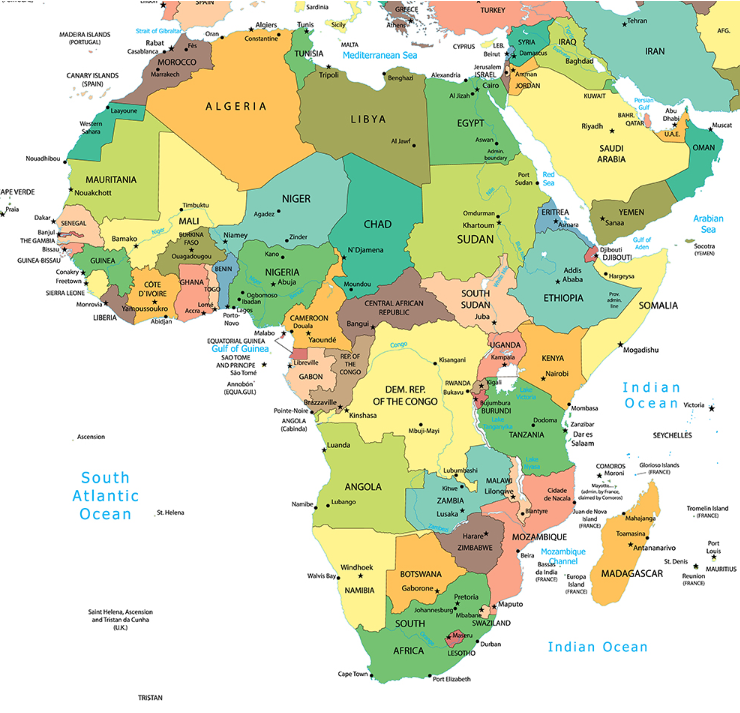
1. Government authoritative data analysis
At a press conference held at 3 pm on April 12, 2024 (Friday), Wang Lingjun , Deputy Director of the General Administration of Customs, and Lu Daliang, Spokesperson and Director of the Statistics and Analysis Department of the General Administration of Customs, introduced Import and export situation in the first quarter of 2024. Because it involves all parts of the world and the content is cumbersome, the author only compiles data on photovoltaic energy storage and lithium batteries in Africa for reference. In March 2024, the African market imported approximately 987 MW of photovoltaic modules from China, an increase of 43% from the 690 MW in February, and an increase of 35% from the 731 MW in the same period of 2023. The cumulative purchase volume in the first quarter of this year was 2.3 GW. , compared with 1.7 GW in the same period last year, a year-on-year increase of 38%
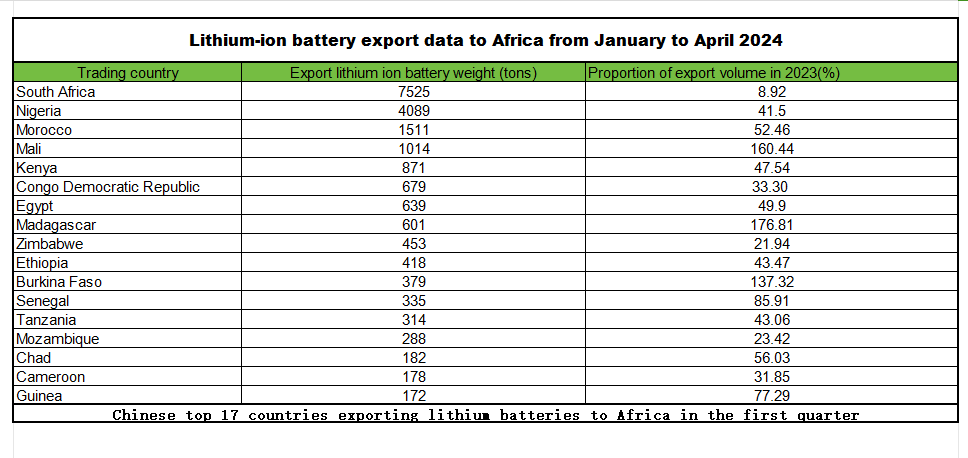
Data shows that for lithium batteries, the southern African country South Africa, the western African country Nigeria, and the northern African country Morocco rank in the top 3.
2. Current photovoltaic reserve market in some African countries
l South Africa
South Africa is located at the southernmost tip of the African continent. It faces the Indian Ocean and the Atlantic Ocean to the east, south and west. The two oceans meet in the waters near Cape Agulhas, with a coastline of 3,000 kilometers. The country's terrain is dominated by plateaus, with 3/4 of the area above 600 meters above sea level, and 1/2 of the area above 1,000 meters above sea level. With a population of 62 million, GDP data ranks first and second in Africa all year round.
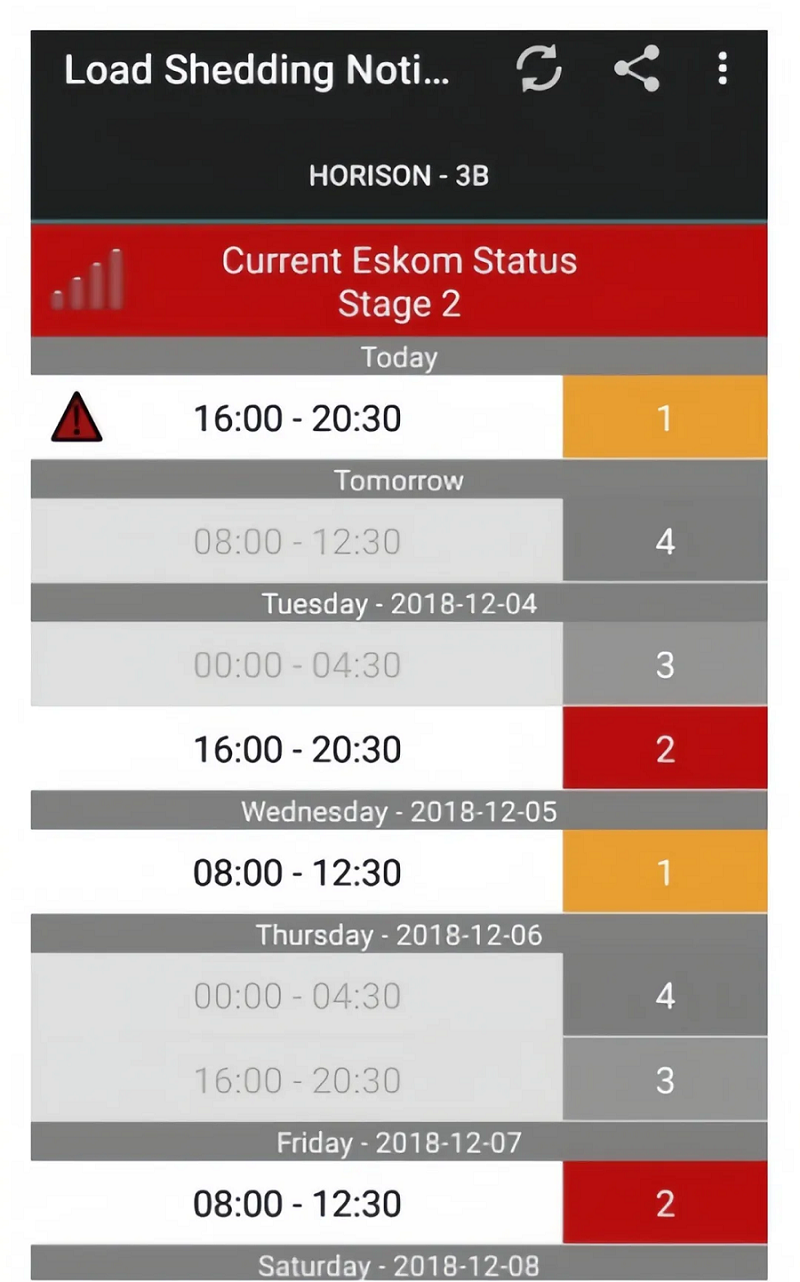
Almost everyone in South Africa has a Load shedding Notifier mobile APP installed on their mobile phone. South Africa’s daily power outage plan will be pushed one day in advance. South Africans have become accustomed to this just like watching the weather forecast.
In 2022, South Africa suffered from power outages for 205 consecutive days, with the total power outage duration reaching 1,900 hours; and since the beginning of 2023, power outages have occurred every day, sometimes even for more than 8 hours a day.
In response to the current situation of electricity in South Africa, Ningbo Deye Technology Co., Ltd. entered the South African market in 2019 through cooperation with local companies to seize the opportunity. In the first half of 2023, its sales to South Africa exceeded 1.1 billion yuan, maintaining a gross profit of 50%. Brilliant achievements
Following closely, companies such as Dyness、SUNGROW、SVOLT Energy Technology、Pylontech、Ginlong、Great Power、GoodWe and other companies also poured into South Africa. However, the energy storage market in South Africa has only tens of billions of household savings, and the market is rapidly saturated.
After investigation, the author visited several photovoltaic energy storage companies such as SUNMAN and Jetion. It was revealed that at the African Future Energy Exhibition held in Johannesburg in March this year, most of the exhibitors were from China.The South African market has become a blue ocean, completely saturated, and the market competition is very fierce. At present, household deposits in the South African market need to be digested for at least a year.
l Zambia
Most of Zambia belongs to the plateau region. It borders the Democratic Republic of the Congo to the north, Tanzania to the northeast, Malawi to the east, Mozambique to the southeast, Zimbabwe, Botswana and Namibia to the south, and Angola to the west. It has a land area of 752,614 square kilometers and a population of 20.57 million.
Authoritative data from the China Economic and Commercial Office in Zambia: At present, the electricity coverage rate among the Zambian population is 25%, and the coverage level in rural areas is less than 5%.
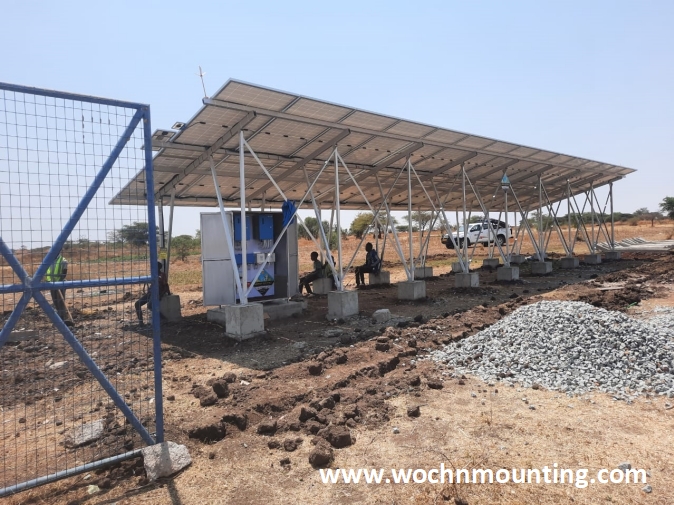
At the end of 2018, media giant StarTimes began to carry out off-grid micro photovoltaic business in Kenya and Zambia. In the vast rural areas of Africa where power coverage is difficult to reach, off-grid micro photovoltaic power supply systems are welcomed by African customers due to their economical power generation, no pollution, long life, high safety factor, and ease of use.
Starting in 2024, Zambia’s power cuts will increase. The capital, Lusaka, has normal mains power supply of no more than 6 hours a day. The vast majority of Zambian citizens believe in Christianity and the folk customs are gentle. Similar to other African countries, the gap between rich and poor is huge.
Roma Park, a high-end villa area in Lusaka, the capital, is located in the center of Lusaka's emerging business district. The residential area of this project was nominated for the Best Residential Award at the 2017 African Real Estate Investment Summit. This project consists of 368 pieces of high-end villa residential land and 42 pieces of commercial land. Most of these residential sites have already been sold. In an African country where the gap between rich and poor is huge, a million-dollar villa is also troubled by power outages. Relevant local agencies have conducted a survey and found that 50% of villa users have demand for photovoltaic household storage. This is a microcosm of the market.
On June 26, 2024, at a relevant meeting held in Lusaka, Zambia, Mutanda Mwewa, President of the Zambia Solar Energy Industry Association, called on the government to provide various preferential policies to implement value-added tax on inverters, chicken embryo incubators, solar sewing machines and other products. Zero-rating, zero-rating of VAT and exemption from customs duties for refrigerators and freezers that use direct current; if the government approves the relevant recommendations made by the association, the solar industry will soon sell these products.
l Mozambique
The Republic of Mozambique is a country in southeast Africa with Portuguese as its official language, a land area of 799,380 square kilometers, and a population of 33 million. According to authoritative statistics from the Economic and Commercial Office of the Chinese Embassy abroad, Mozambique’s domestic power grid coverage is relatively low, only 39%, and existing transmission lines are mainly concentrated along and in surrounding areas of large cities. Mozambique is a coastal country, and its citizens are relatively lively and enthusiastic.
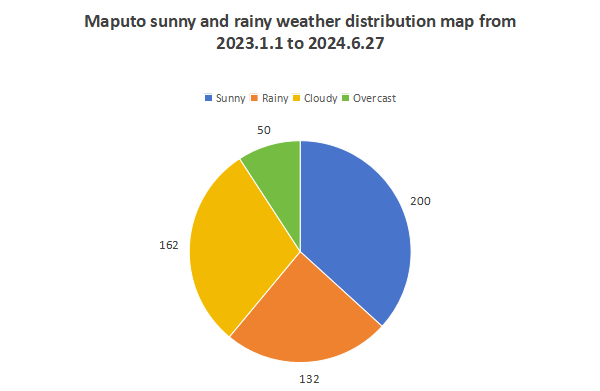
According to data, Mozambique has an average annual sunshine time of more than 1,500 hours, and photovoltaic energy storage has obviou
East african countries
l Uganda
Uganda is a country located in eastern Africa, straddling the equator, bordering Kenya to the east, Tanzania and Rwanda to the south, Congo (DRC) to the west, and South Sudan to the north, with a total area of 241,550 square kilometers. Most of the territory is located on the East African Plateau, with many lakes and an average altitude of 1,000 to 1,200 meters. It is known as the "Plateau Water Town" and has a population of 47.25 million.
The development of power infrastructure in Uganda lags behind and the power supply is unstable. Chinese-funded enterprises investing in Uganda generally have their own generating sets. In recent years, Uganda's power generation has been in a state of progress, with no shortage of power but power restrictions. There is a power grid connection between Uganda and Kenya, and part of the electricity is exported to Kenya every year.
In the center of Kampala, the first shop selling solar panels for homes opened here in 2008. Customers come not only from rural areas, but also from urban areas. Because power outages are a common occurrence in Uganda, buying a solar panel can help you be prepared.
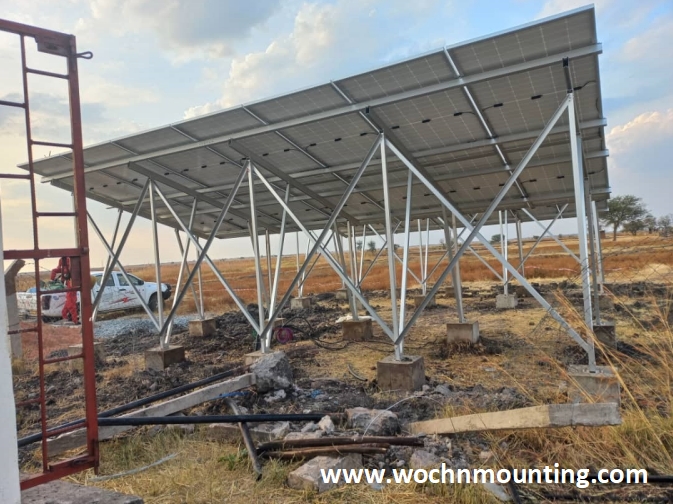
l Tanzania
The United Republic of Tanzania, with its capital Dodoma, is located in eastern Africa, south of the equator. It borders Kenya and Uganda to the north, Zambia, Malawi, and Mozambique to the south, Rwanda, Burundi, and the Democratic Republic of the Congo to the west, and the Indian Ocean to the east. The total area is 945,087 square kilometers and the coastline is 840 kilometers long. Total population 65.44 million. Politically stable, a multi-ethnic country, China and Tanzania have good relations.
According to the plan, by 2040, the proportion of natural gas, coal, hydropower and new energy power generation in Tanzania will be 40%, 35%, 20% and 5% respectively. Tanzania has been suffering from a long-term power shortage, which has restricted the country’s economic development.
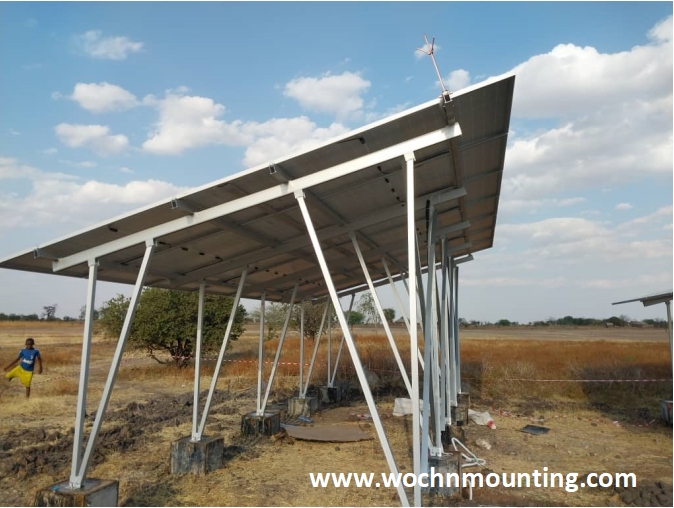
Tanzania has ample sunshine resources, especially in the northern and southern regions. This provides ideal conditions for solar power generation. Secondly, the Tanzanian government has realized the importance of solar energy and has taken active measures to promote the development of renewable energy. The government has formulated a series of policies and regulations to encourage the private sector and investors to participate in solar projects, and provides incentives such as tax incentives and subsidy schemes. This creates a good business environment and reliable return opportunities for investors.
West african countries
l Nigeria
The Federal Republic of Nigeria is a country in southeastern West Africa, the apex of the west coast of the Gulf of Guinea in Africa. Its neighbors include Benin to the west, Niger to the north, a short national border with Chad across Lake Chad in the northeast, Cameroon to the east and southeast, and Cameroon to the south. It borders the Atlantic Ocean and the Gulf of Guinea, with a land area of 923,768 square kilometers and a population of 227 million.
Nigeria’s electricity supply is very underdeveloped. It is estimated that the total installed power generation in Nigeria is 13.5GW, and the peak power demand is 8.25GW. However, the actual power generation in recent years is only 3.7GW, leaving a huge gap in power demand. About 70% of Nigeria's current power generation comes from thermal power and 30% from hydropower. Most of the power generation equipment is old and lacks proper maintenance. It also faces problems such as insufficient natural gas supply and serious electricity theft. Due to the shortage of power supply, most government agencies, institutions and more than 97% of enterprises in Nigeria have to provide their own generators to generate electricity. The contradiction between power supply and demand has become one of the main problems hindering Nigeria's economic development.
According to Nigeria's renewable energy and energy efficiency policy introduced in 2024, the local government expects to achieve 20% of renewable energy power generation in 2030. Among them, solar energy, wind power, geothermal energy, etc. are all target projects to be developed. Therefore, after Chinese-funded photovoltaic energy storage companies lost confidence in the blue ocean game of photovoltaic in South Africa, they turned to Nigeria, a large country in West Africa.
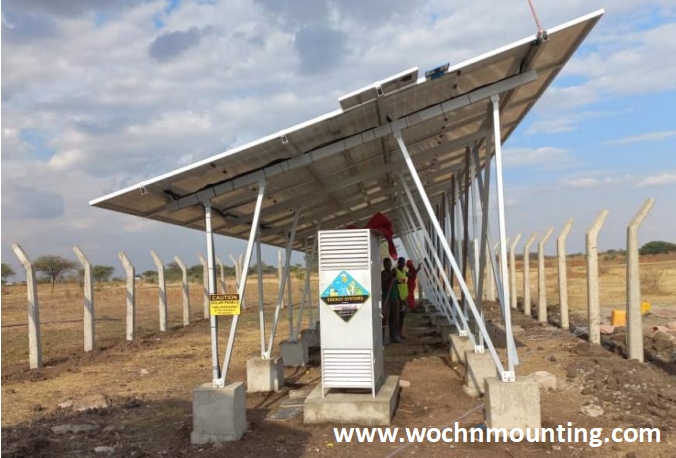
Northern african countries
l Egypt
Cairo, the capital of the Arab Republic of Egypt, spans two continents, Asia and Africa, and is mostly located in northeastern Africa. It borders Libya to the west, Sudan to the south, the Red Sea to the east and borders Palestine and Israel, and the Mediterranean Sea to the north. The northern coast has a Mediterranean climate, while the rest of the area has a tropical desert climate. It consists of plains, river valleys and plateaus, with a total area of 1,000,145 square kilometers and a coastline of approximately 2,900 kilometers. The country is divided into 27 provinces. Egypt has a total population of approximately 104 million and its official language is Arabic.
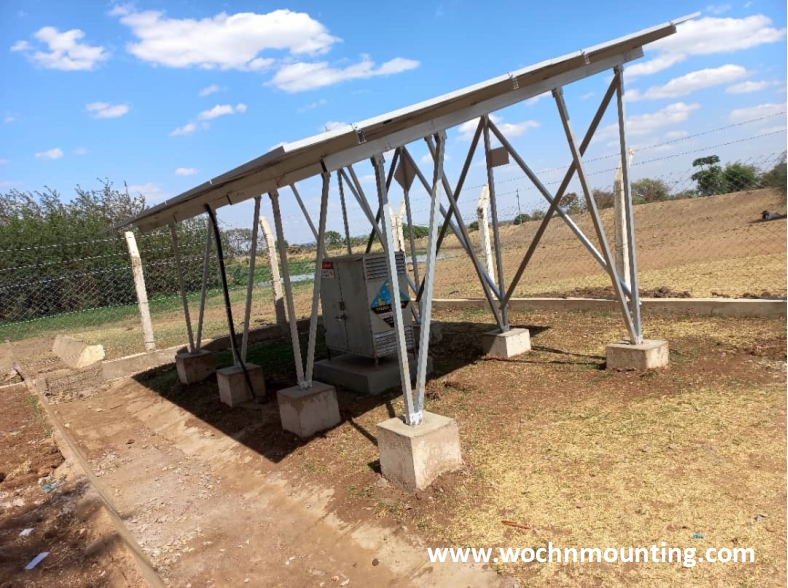
Egypt is short of electricity due to the following reasons:
i. Egypt does not have enough oil, diesel and natural gas to supply its power generation sector.
ii. Citizens are not aware of the concept of rational use of electricity. The large-scale use of air conditioners has put Egypt’s power supply system under tremendous pressure. Data shows that there are nearly 6 million air conditioners in Egypt today.
iii. The Egyptian power grid cannot cover certain areas because local farmers refuse to accept cables being laid on their land.
iv. Many Egyptian power plants are out of service due to lack of maintenance.
v. Many criminals steal electricity and divert the electricity used to supply street lights and public facilities into illegal buildings to cause power supply shortages.
Egypt has abundant solar energy resources, with an average sunshine duration of 9-11 hours and an average annual direct solar radiation intensity of 2000-3200kWh per square meter. It is fertile ground for the development of photovoltaic power generation. This year, Chinese-funded enterprises Power China and China Western Construction are paving the way for Egypt’s large-scale storage track. Competition in the household storage, industrial and commercial storage track is also in a blue ocean state. Based in Egypt, it can also radiate to the Middle East market.
l Morocco
The Kingdom of Morocco is a coastal Arab country in northwest Africa. It borders Algeria in the east and southeast, Western Sahara in the south, the Atlantic Ocean in the west, and Spain and Portugal across the sea in the north. Its capital is Rabat, with a land area of 459,000 square kilometers. (excluding Western Sahara 266,000 square kilometers), population 37.8 million.
Relevant information shows that when Chinese-funded enterprises come to Morocco to invest and set up factories, such as in industrial parks or bonded areas built by the government, the electricity can meet their needs and they do not need to provide their own power generation equipment. However, residents’ electricity consumption cannot be guaranteed. Although Morocco has abundant light resources, due to its weak industrial base and lack of professional workers in the power construction industry, the country has been quite deficient in the energy field. It imports a large amount of electricity from neighboring Spain every year, spending more than 6 billion US dollars.
The Moroccan government is actively encouraging developers to install distributed photovoltaic systems, especially in remote and off-grid areas. For investors interested in small-scale photovoltaic systems, this offers a number of investment prospects, including residential and commercial projects. In addition to promoting rural development and power supply, decentralized photovoltaic investment also provides attractive returns on investment.
3.Analysis of industry competition in the African photovoltaic market
The current African photovoltaic market is mainly controlled by three major forces: Chinese, Indians and Pakistanis (Indians and Pakistanis), and local Africans. This is consistent with other manufacturing industries such as steel. The Chinese have the advantage of purchase channels, while the African locals have advantages such as sales channels and personal connections. Among the Chinese doing photovoltaic module business in Africa, they used to be mainly Chinese doing foreign trade. After the 531 New Deal, more and more Chinese photovoltaic module companies came to Africa and set up offices or branches, and competition has become increasingly fierce.
4.Investment suggestions for the African photovoltaic market
The more stable the country's political situation and economy are, and the more supportive the government is for photovoltaics, the more attractive it will be to invest in the photovoltaic industry. Africa has a unique market environment. Chinese overseas companies should design products according to local conditions, keep abreast of industry trends and constantly adjust strategies. Although Africa has a large demand for new energy, its governments and people have poor purchasing power and are very sensitive to product prices. In addition, the geographical distribution and development level of energy in African countries are extremely uneven. Segmenting the market, finding the correct market positioning, and making corresponding strategic adjustments are top priorities.
In addition, using local labor and quickly establishing distributor channels are important signs of fully opening up the African market and measuring the degree of localization. Only projects that deeply understand the needs of local people and create local job opportunities will be more adaptable to the African market.

